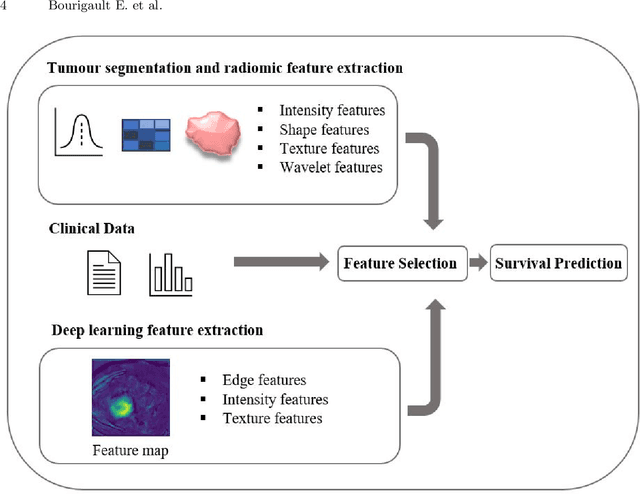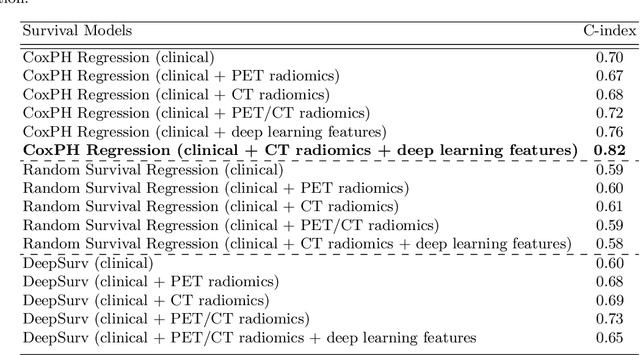Multimodal PET/CT Tumour Segmentation and Prediction of Progression-Free Survival using a Full-Scale UNet with Attention
Paper and Code
Nov 06, 2021



Segmentation of head and neck (H\&N) tumours and prediction of patient outcome are crucial for patient's disease diagnosis and treatment monitoring. Current developments of robust deep learning models are hindered by the lack of large multi-centre, multi-modal data with quality annotations. The MICCAI 2021 HEad and neCK TumOR (HECKTOR) segmentation and outcome prediction challenge creates a platform for comparing segmentation methods of the primary gross target volume on fluoro-deoxyglucose (FDG)-PET and Computed Tomography images and prediction of progression-free survival in H\&N oropharyngeal cancer.For the segmentation task, we proposed a new network based on an encoder-decoder architecture with full inter- and intra-skip connections to take advantage of low-level and high-level semantics at full scales. Additionally, we used Conditional Random Fields as a post-processing step to refine the predicted segmentation maps. We trained multiple neural networks for tumor volume segmentation, and these segmentations were ensembled achieving an average Dice Similarity Coefficient of 0.75 in cross-validation, and 0.76 on the challenge testing data set. For prediction of patient progression free survival task, we propose a Cox proportional hazard regression combining clinical, radiomic, and deep learning features. Our survival prediction model achieved a concordance index of 0.82 in cross-validation, and 0.62 on the challenge testing data set.
 Add to Chrome
Add to Chrome Add to Firefox
Add to Firefox Add to Edge
Add to Edge